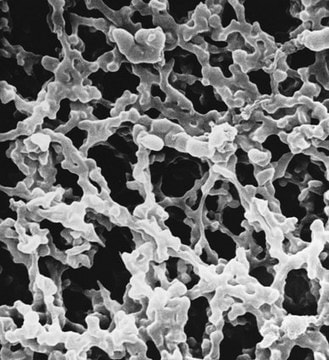TSTP04700
Polycarbonate Membrane Filter, 3.0 μm Pore Size
Isopore™, filter diam. 47 mm, hydrophilic
Synonym(s):
Isopore™ Membrane Filter
About This Item
Recommended Products
material
plain filter
polycarbonate membrane
white filter
sterility
non-sterile
feature
hydrophilic
manufacturer/tradename
Isopore™
Millipore
parameter
0.868 L/min-cm2-psi air flow rate
140 °C max. temp.
3628 mL/min-cm2-psi water flow rate (maximum flow rate per 1.0 psi)
~475 mL/min-cm2 water flow rate at 10 psi (typical results)
filter diam.
47 mm
thickness
22 μm
gravimetric extractables
<1%
refractive index
n/D 1.6
matrix
Isopore™
pore size
11.3 % porosity
3.0 μm pore size
bubble point
≥0.32 bar, air with water at 23 °C
shipped in
ambient
Looking for similar products? Visit Product Comparison Guide
General description
Application
- Chemotaxis
- Bioassays
- Cytology
- Air monitoring
- Microplastics analysis
- filter microplastics associated with microbes from seawater samples
- wrap and encapsulate tumor for implantation in mice to mimic anti-angiogenic (AA) therapy
- filter out phytoplankton and large-sized particles
- hold mammalian cell lines for ultraviolet (UV) irradiation studies
Features and Benefits
- Isopore™ membranes have low background interference.
- Particle retention on the membrane surface favorable for counting and analysis.
- Non-hygroscopic and translucent material.
- Rapid sample drying and analysis time.
- Also available in a brown variety.
Caution
Legal Information
Certificates of Analysis (COA)
Search for Certificates of Analysis (COA) by entering the products Lot/Batch Number. Lot and Batch Numbers can be found on a product’s label following the words ‘Lot’ or ‘Batch’.
Already Own This Product?
Find documentation for the products that you have recently purchased in the Document Library.
Our team of scientists has experience in all areas of research including Life Science, Material Science, Chemical Synthesis, Chromatography, Analytical and many others.
Contact Technical Service


